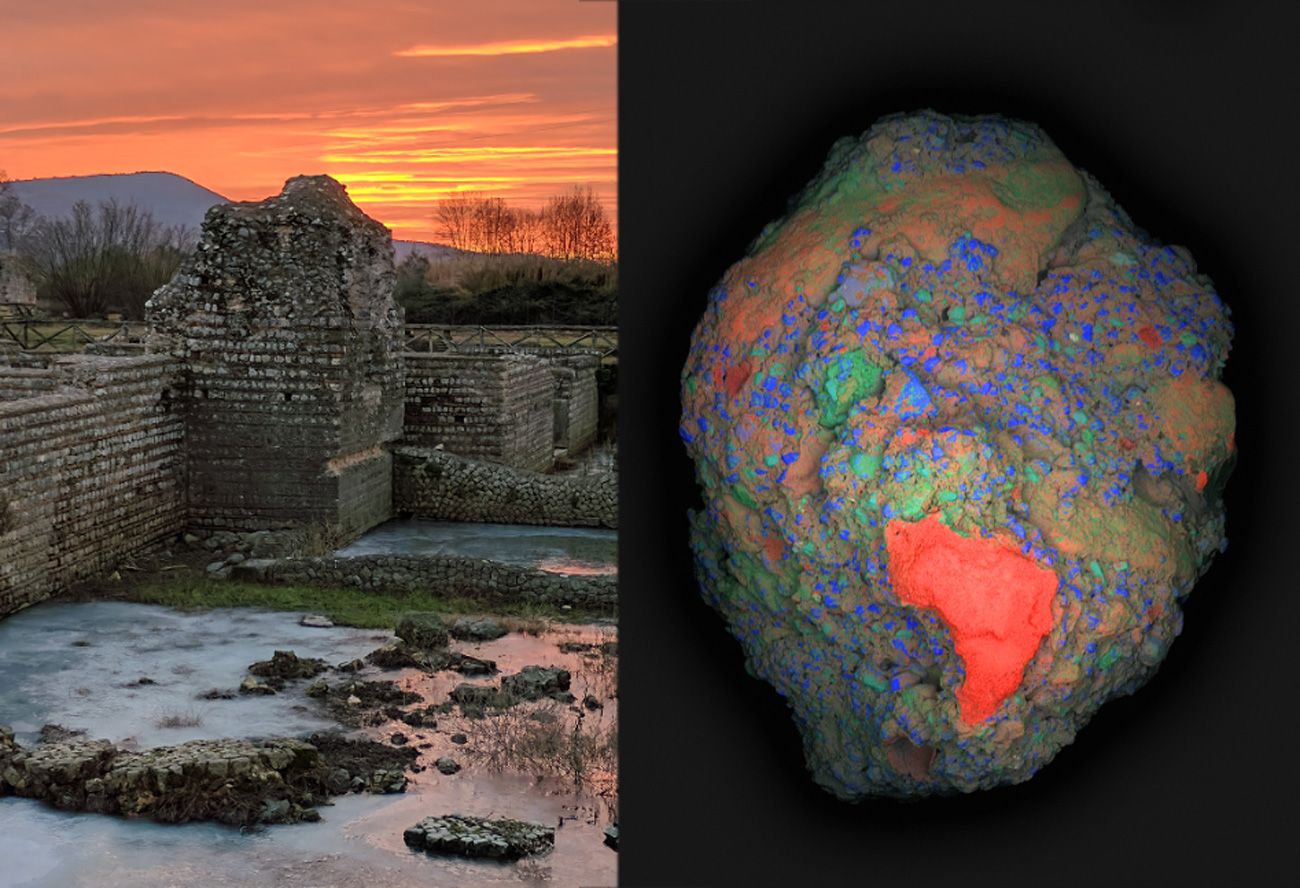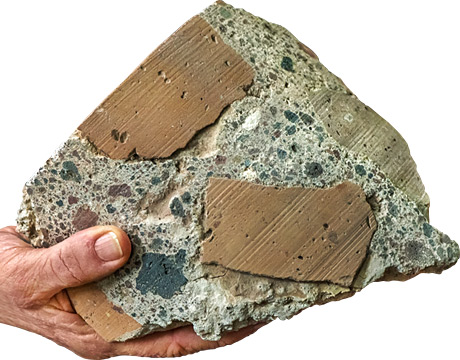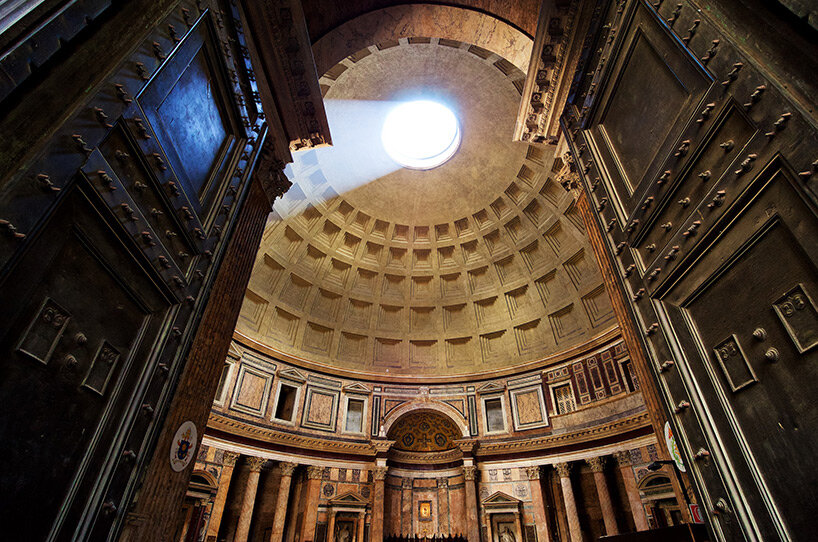Ancient Roman concretes have survived millennia, but mechanistic insights into their durability is an enigma. To solve the mystery, researchers from MIT and elsewhere analyzed the samples of Roman concrete from the city wall of the ancient city of Privernum, near Rome, Italy. Privernum was occupied as early as the 2nd century BCE through the 13th century CE, and the site was first excavated in the 18th century, with the most recent work performed from 1990 to present.

For many years, researchers have assumed that the key to the ancient concrete’s durability was based on one ingredient: pozzolanic material such as volcanic ash from the area of Pozzuoli, on the Bay of Naples.
This specific kind of ash was even shipped all across the vast Roman empire to be used in construction, and was described as a key ingredient for concrete in accounts by architects and historians at the time.
Under closer examination, these ancient samples also contain small, distinctive, millimeter-scale bright white mineral features, which have been long recognized as a ubiquitous component of Roman concretes.
These white chunks, often referred to as lime clasts, originate from lime, another key component of the ancient concrete mix.
“Ever since I first began working with ancient Roman concrete, I’ve always been fascinated by these features,” said MIT’s Professor Admir Masic, senior author of the study.

“These are not found in modern concrete formulations, so why are they present in these ancient materials?.”
Professor Masic and colleagues suggest that these tiny lime clasts gave the concrete a previously unrecognized self-healing capability.
“The idea that the presence of these lime clasts was simply attributed to low quality control always bothered me,” Professor Masic said.
“If the Romans put so much effort into making an outstanding construction material, following all of the detailed recipes that had been optimized over the course of many centuries, why would they put so little effort into ensuring the production of a well-mixed final product? There has to be more to this story.”

Upon further characterization of these lime clasts, the researchers gained new insights into the potential functionality of these lime clasts.
Historically, it had been assumed that when lime was incorporated into Roman concrete, it was first combined with water to form a highly reactive paste-like material, in a process known as slaking. But this process alone could not account for the presence of the lime clasts.
Studying samples of this ancient concrete from the ancient Roman city of Privernum, the authors determined that the white inclusions were, indeed, made out of various forms of calcium carbonate.
And spectroscopic examination provided clues that these had been formed at extreme temperatures, as would be expected from the exothermic reaction produced by using quicklime instead of, or in addition to, the slaked lime in the mixture.
According to the team, hot mixing was actually the key to the super-durable nature.
“The benefits of hot mixing are twofold,” Professor Masic explained.
“First, when the overall concrete is heated to high temperatures, it allows chemistries that are not possible if you only used slaked lime, producing high-temperature-associated compounds that would not otherwise form.”
“Second, this increased temperature significantly reduces curing and setting times since all the reactions are accelerated, allowing for much faster construction.”

During the hot mixing process, the lime clasts develop a characteristically brittle nanoparticulate architecture, creating an easily fractured and reactive calcium source, which could provide a critical self-healing functionality.
As soon as tiny cracks start to form within the concrete, they can preferentially travel through the high-surface-area lime clasts.
This material can then react with water, creating a calcium-saturated solution, which can recrystallize as calcium carbonate and quickly fill the crack, or react with pozzolanic materials to further strengthen the composite material.
These reactions take place spontaneously and therefore automatically heal the cracks before they spread.
Previous support for this hypothesis was found through the examination of other Roman concrete samples that exhibited calcite-filled cracks.
To prove that this was indeed the mechanism responsible for the durability of the Roman concrete, the team produced samples of hot-mixed concrete that incorporated both ancient and modern formulations, deliberately cracked them, and then ran water through the cracks.
Within two weeks the cracks had completely healed and the water could no longer flow.
An identical chunk of concrete made without quicklime never healed, and the water just kept flowing through the sample.
“It’s exciting to think about how these more durable concrete formulations could expand not only the service life of these materials, but also how it could improve the durability of 3D-printed concrete formulations,” Professor Masic said.







